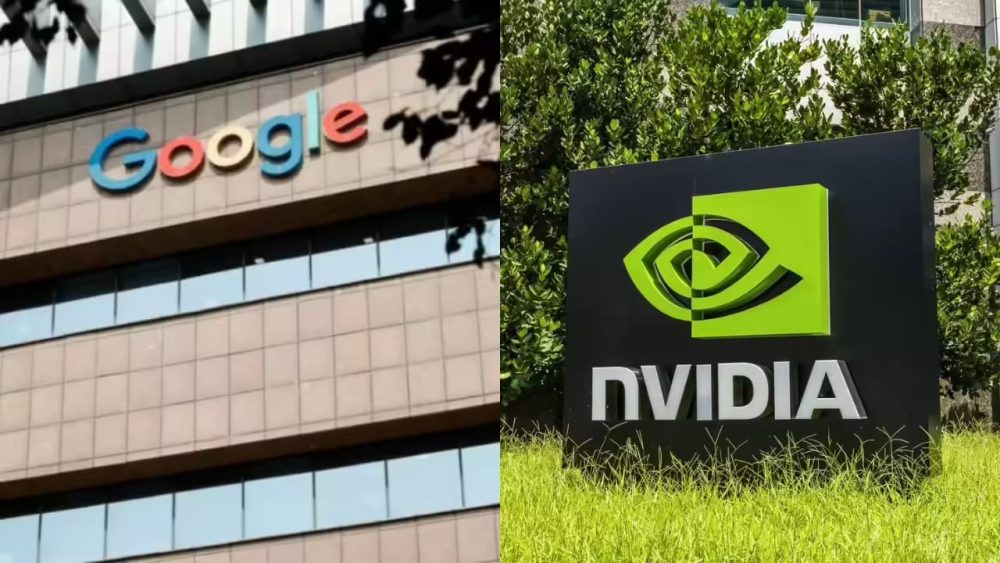Meta is reportedly in advanced talks to spend billions on Google’s AI chips starting in 2027, with an additional option to rent TPU capacity from Google Cloud as early as next year, according to The Information. If finalized, this would be one of the most essential AI hardware deals of the decade – and a direct challenge to Nvidia’s dominance.
Markets reacted immediately:
- Broadcom – which helps Google build its TPUs – jumped about 2%.
- Nvidia fell around 3–4% on the news, as investors digested the idea that one of its biggest customers might diversify away.
Meta is currently one of Nvidia’s largest buyers, with up to $72 billion in planned AI hardware spending this year alone. Redirecting even part of that budget toward Google’s tensor processing units (TPUs) would be a huge symbolic and strategic win for Alphabet.
What Meta And Google Are Discussing
According to the report, the talks include two layers:
- Long-term hardware deal (from 2027):
Meta would deploy Google TPUs in its own data centers to train and run large AI models and services. - Short-term cloud capacity (from 2026 or earlier):
Meta may rent TPU capacity via Google Cloud, leveraging Google’s infrastructure while its own deployments ramp up.
This comes on top of Google’s earlier deal to supply up to 1 million TPUs to Anthropic, another major AI player, a move already seen as strong validation of Google’s accelerator roadmap.
Why This Is A Big Problem For Nvidia
Nvidia’s GPUs are the de facto standard for AI training and inference—Big Tech, startups, research labs, and almost everyone build on CUDA and Nvidia’s ecosystem.
A Meta–Google deal would:
- Legitimize TPUs as a genuine alternative to Nvidia for hyperscalers.
- Reduce Meta’s dependence on a single supplier in a market where GPU shortages and pricing power are serious concerns.
- Encourage other large AI players to consider multi-vendor strategies with TPUs, AMD accelerators, and other custom silicon.
Investors were already anxious about a possible AI hardware bubble, especially after skeptics like Michael Burry questioned Nvidia’s revenue quality and circular AI deals. News that Meta might shift part of its long-term capex to Google adds another layer of uncertainty.
How Strong Are Google’s TPUs, Really?
Google’s TPUs (Tensor Processing Units) are application-specific integrated circuits (ASICs) designed from the ground up for AI workloads. Unlike GPUs – built initially for graphics and later repurposed for AI – TPUs are tailored to matrix math and large-scale ML.
Key points:
- Optimized for training and inference of large models.
- Deep integration with Google Cloud, Gemini, and internal AI workloads.
- Co-evolution between DeepMind / Google AI teams and the chip design group: model requirements feed directly into silicon design.
Google has been using TPUs internally for years, but only recently started pushing them aggressively as a commercial alternative:
Analysts described Anthropic’s TPU deal as a “powerful validation” of the platform – a Meta deal would be the next big proof point.
Meta’s AI Spending and Why It Matters
Meta is on track to spend at least $40–50 billion on AI accelerators in 2026 alone, based on its stated capex plans. That money will fund:
- Training and serving large language models and multimodal AI
- Ranking and recommendation systems across Facebook, Instagram, Threads, and Reels
- Generative AI assistants and content tools
- AR/VR and metaverse-related compute
If even a fraction of that budget shifts toward Google TPUs, it could:
- Accelerate Google Cloud growth, especially consumption and backlog tied to TPUs and Gemini-based services.
- Pressure Nvidia to defend pricing, improve availability, or differentiate further with software and ecosystem features.
- Encourage other hyperscalers to double down on their own custom silicon (AWS Trainium/Inferentia, Microsoft Maia, etc.).
The Bigger Picture: AI Hardware Becomes a Multi-Polar World
Up to now, the AI hardware story has been chiefly: “Nvidia vs. everyone else (far behind).”
These Meta–Google talks hint at a new phase:
- Nvidia remains the gold standard, especially for general-purpose AI compute and CUDA-based ecosystems.
- Google TPUs position themselves as a credible, large-scale alternative for hyperscalers who can adapt their software stack.
- AMD and custom chips (AWS, Microsoft, Meta’s own silicon) fill in additional lanes, especially for inference and specialized workloads.
Suppose the deal goes through and TPUs perform as promised in Meta’s data centers, in terms of compute density, power efficiency, and total cost of ownership. In that case, Nvidia will face the first truly large-scale, production-proven rival in its most important market segment.


